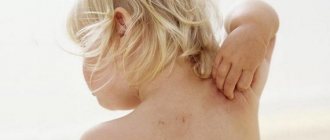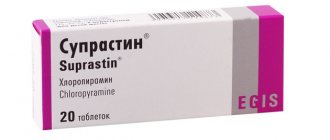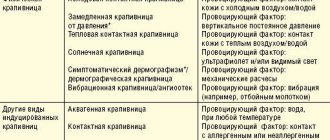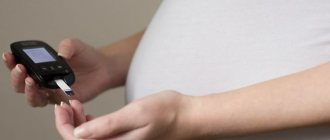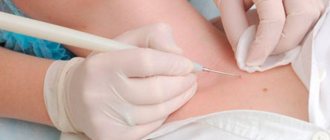- Gallery
- Reviews
- Articles
- Licenses
- Vacancies
- Insurance partners
- Partners
- Controlling organizations
- Schedule for receiving citizens for personal requests
- Online consultation with a doctor
- Documentation
Dermatitis in children is a group of inflammatory skin reactions that occur as a result of exposure of the skin of children to various substances in conditions of increased sensitivity of the child’s body to any irritants.
The main reasons for the development of dermatitis in childhood are:
- hereditary predisposition to allergic reactions,
- frequent infectious diseases of the child,
- use of certain medications in childhood,
- as well as concomitant intestinal diseases and dysbiosis.
There are several types of dermatitis in children, among which the most common are: seborrheic, atopic, diaper and contact dermatitis.
Seborrheic dermatitis in a child is an inflammation of the skin of the scalp (however, there are other localizations of the disease), the main symptom of which is the presence of greasy yellow crusts on the surface of the skin. If a child develops symptoms of seborrheic dermatitis, you should immediately consult a doctor who will establish a diagnosis and prescribe treatment.
Atopic dermatitis in children is an inflammation of the skin, which is manifested by redness, dryness and flaking of the skin, the appearance of small blisters with liquid on the inflamed areas of the skin, as well as itching. The cause of atopic dermatitis is currently considered to be an innate predisposition of the child’s immune system to allergic reactions. In the blood of children with atopic dermatitis, as a rule, an increased level of antibodies responsible for allergies (immunoglobulins type E, IgE) is found.
Most children with atopic dermatitis have one or another intestinal disease, accompanied by dysbiosis (violation of the ratio of beneficial and harmful intestinal bacteria). Treatment of atopic dermatitis is aimed at eliminating the symptoms of the disease, as well as preventing relapse of the disease (exacerbation of atopic dermatitis).
Diaper dermatitis is an inflammation of the skin in the area of the buttocks, genitals, and inner thighs of a child as a result of prolonged exposure of the skin in this area to urine and feces. The development of diaper dermatitis is promoted by: improper use of diapers. To prevent diaper dermatitis, you should use high-quality diapers and change them at least once every 4-6 hours.
Contact dermatitis in children is an inflammation of the child’s skin in the area of direct exposure to any irritant (for example, in the area of constant friction of clothing, seams, the use of irritating cream, skin contact with metal objects, etc.)
Treatment of dermatitis in children depends on the type of dermatitis, the age of the child and the presence of complications of the disease.
Make an appointment with a pediatric dermatologist by phone
Services and prices
Primary appointment (examination, consultation) with a dermatovenerologist
2,200 rub.
Repeated appointment (examination, consultation) with a dermatovenerologist
2,100 rub.
Avdeikina Olga Nikolaevna Dermatovenerologist Experience: 9 years
Dear patients! For your convenience and prompt provision of all the information you need, we ask you to leave your request during the clinic’s opening hours.
Diagnosis of dermatitis in a child
Only qualified specialists - a pediatrician, an immunologist, a dermatologist - can diagnose one or another type of skin disease in a baby. In addition to a thorough visual examination, the diagnostic process includes collecting information about the diseases of family members, various laboratory examinations and tests. However, while bathing, swaddling and dressing your baby, you should pay attention to his skin, thereby conducting an independent diagnosis. If redness or rash does not go away and raises suspicions, this is a reason to consult a specialist.
Sign up for a study at the NEARMEDIC clinic
NEARMEDIC became the first private clinic in the capital to receive the Quality Mark and the Moscow Quality award. In the NEARMEDIC network of clinics, treatment is carried out by experienced immunologists-allergists and dermatologists with specialized qualifications and many years of practice. In clinics you can undergo laboratory diagnostics.
Specialists will conduct a full examination of children and adults, including not only skin tests, but also taking an anamnesis and a full comprehensive examination of the body. This makes it possible to exclude the total effect of different substances or the absence of an allergen in standard test systems. The allergist will select desensitizing therapy and develop a plan of preventive measures. Within 1-3 weeks, the unpleasant symptoms will subside and the treatment will be completed.
To make an appointment yourself or to register your children for an appointment, use the form on the website or call us. We will help you choose a convenient time and answer all your questions.
Causes
Allergic dermatitis is provoked by any substances and materials individually for each person, but there are several groups of substances due to which the problem occurs more often.
The main reasons for the development of the reaction:
- metal alloys, which include nickel, cobalt, chromium - jewelry, kitchen utensils, rivets/clasps, keys, dental crowns, braces, staples and pins for osteosynthesis;
- latex – condoms, gloves;
- ethylenediamine hydrochloride - some drugs, antihistamines;
- formaldehyde – insecticides, cosmetics, workwear;
- chlormethylisothiazolinone – found in cosmetics;
- anesthetics in the form of creams, sprays.
Symptoms
Allergic dermatitis most often occurs in older children and middle-aged adults. All appearances are divided into two groups of three subgroups:
- acute, subacute and chronic;
- mild, moderate and severe.
The primary reaction can appear 10-14 days, and sometimes several years after regular exposure to the allergen, if it is weak. A repeated reaction may occur within 12-72 hours.
Main symptoms:
- itchy sensations;
- swelling and redness at the site of contact;
- the appearance of vesicles and bubbles against the background of hyperemia;
- vesicle formation;
- in place of the opened bubbles, weeping erosions appear;
- erosions heal, crusts and scales appear.
The step-by-step process described above is characteristic of the acute form of the disease; in the chronic form, the process proceeds a little differently - it begins with papules, then peeling appears, and lastly excoriation (scratching). If the substance stimulating the reaction was a very serious allergen (for example, poison), general symptoms of intoxication may appear: headache, fever and weakness.
Symptoms appear in the place where there was contact with the allergen. For this reason, this dermatitis does not show symmetrical manifestations on the arms and legs, and its causative agent is easy to identify. Occupational allergies manifest themselves on the hands - palms, sides of the hands, skin between the fingers, forearms. If the problem is caused by jewelry or fasteners, then the manifestation will be noticed at the point of contact with them.
Contact dermatitis, when it first appears, is clearly visible at the site of contact with the skin, so its cause is easy to determine. With subsequent exacerbations, redness with papules may appear in any other place on the body, which causes much more inconvenience to patients. If with a single contact the disease can be eliminated after 1-3 weeks, it may take months to enter the chronic stage.
Akriderm preparations for dermatoses
Akriderm ointments and creams are combination preparations that contain several active substances at once, which provide comprehensive treatment for dermatitis of allergic and non-allergic nature. They provide:
- antipruritic effect;
- anti-inflammatory effect;
- antiallergic effect;
- vasoconstrictor effect.[6]
This therapeutic effect was achieved thanks to a thoughtful combination of glucocorticosteroids with broad-spectrum antibiotics and antifungal components. Akriderm ointments and creams not only fight redness, itching and swelling, but also protect the skin from bacterial and fungal infections.
In the fight against contact dermatitis (simple and allergic), it is advisable to use the following Akriderm preparations:
- Akriderm SK ointment contains salicylic acid, due to which it acts quickly and has a favorable safety profile.
- Akriderm GENTA ointment is used for chronic skin pathologies, in particular those complicated by secondary infection.
- Ointment or cream "Akriderm GK" - used for acute and chronic inflammation to suppress unpleasant symptoms
- Ointment or cream "Akriderm" - thanks to the thoughtful concentration of active substances, can also be used for children over 1 year of age.[7]
links to sources
- Contact dermatitis - Clinical guidelines, Russian Society of Dermatovenereologists and Cosmetologists, 2022.
- Dikovitskaya I.G., Korsunskaya I.M., Nevozinskaya Z. Contact dermatitis: clinical picture and therapy // Sovrem. problems of dermatovenerology, immunology and medicine. cosmetology. 2010. T. 4. No. 4. pp. 49–51.
- Stepanova E.V. Allergic contact dermatitis: basic approaches to diagnosis, treatment and prevention // Attending physician. - 2009. - No. 10. - P. 15-19.
- Mercedes E. Gonzalez, “Contact dermatitis” MD, University of Miami Miller School of Medicine.
- Batyrshina S.V. Glucocorticosteroids for local use in the modern strategy for the treatment of inflammatory dermatoses in pediatric practice // Practical Medicine, 2014. No. 9 (85). pp. 94–102.
- Federal clinical guidelines. Dermatovenereology 2015: Skin diseases. Sexually transmitted infections. – 5th ed., revised. and additional – M.: Business Express, 2016. – 768 p. 3. Instructions for use of the medicinal product for medical use Akriderm®. No. Reg. beat LS-002317, R N000663/01.
- Instructions for medical use Akriderm®
What is dermatitis?
Cutaneous dermatitis is a general term indicating inflammation. It can have different causes and forms. An example of a disease is eczema, seborrhea, skin damage upon contact with any substance (for example, nickel in jewelry).
This is a common pathology. It is not contagious, but significantly reduces a person’s quality of life, causing not only unpleasant symptoms, but also limiting the patient’s social activity. Treatment of dermatitis must be comprehensive and long-term; only in this case is it possible to eliminate the signs of the disease. To do this, you need to consult a dermatologist.
Treatment of dermatitis in a child
Treatment of skin diseases in children requires an integrated approach. First of all, this is the elimination of contact with the irritant - further treatment depends on the diagnosis. The treatment complex necessarily includes care for irritated skin areas, in addition to medications, if necessary.
Skin care for diaper dermatitis
To soothe irritated skin in the diaper area, it is recommended to use special protective creams, including cosmetic ones, which reduce pain and restore the skin.
Diaper cream 1 2 3 is applicable in two directions at once:
- For redness it is effective in 80% of cases after the first applications 1
- When used regularly to prevent the recurrence of diaper rash, it helps reduce the frequency of exacerbations by 74%1
Skin care for very dry skin and atopic dermatitis
At all stages of atopic dermatitis (including its first signs in the form of increased dry skin), experts recommend the use of emollients - special cosmetics. They moisturize the skin for a long time, help eliminate itching and, in mild cases of atopic dermatitis, help reduce inflammation. It is important to remember that the main task of emollients is to launch an independent process of lipid production in the skin , so pay attention to ensure that the emollient is not addictive.
Stelatopia emollient cream promotes effective hydration in a natural way by helping the skin produce its own lipids.
- In 90% of cases, it reduces excessive dry skin and reduces the likelihood of clinical signs of AD by 51% 2
- In 86% of cases it helps restore the protective barrier2
- Reduces inflammation after 32 hours3
Scalp care for Seborrheic dermatitis
Remember the main rule: do not comb out milky crusts. While combing, you can injure your baby's skin, which can lead to a secondary infection. If you want to get rid of milk crusts at home, use special cosmetics labeled 0+. Pay attention to the composition - it is advisable that the products do not contain perfumes and aggressive surfactants (surfactants).
Shampoo - foam from “milk crusts” for newborns will allow you to gently and carefully remove milk crusts, soften the scalp and normalize the functioning of the sebaceous glands. Contains 99% ingredients of natural origin and soft surfactants. And if the crusts are dense and are localized not only on the baby’s head, we recommend using Shampoo - foam for “milk crusts” for newborns in combination with Cream for “milk crusts”.
Cream and Foam Shampoo for “milk crusts” help eliminate milk crusts in an average of 7 days 4
Important: if in doubt, if redness appears in your baby, you should consult your doctor. A professional examination and accurate diagnosis will bring peace of mind to both you and your baby.
Artificial feeding and allergic dermatitis
The problem of overeating is especially relevant for children who are bottle-fed. This is why this happens: about 10-15 minutes pass between filling the stomach and feeling full. If a baby is breastfed, he eats 95% of the milk in the first 5-10 minutes of feeding, and then continues to suck until he feels full. When feeding from a bottle, the child receives the required amount of food much earlier (no more than 5 minutes), but the feeling of fullness is delayed. As a result, the child will ask for more food, and if he receives it, he will be able to eat one and a half, or even two times more than normal. Therefore, most artificial babies gain more weight than breastfed babies. Strong people who gain 1 kg of weight instead of the required 600 grams look very cute to the delight of their parents and grandmothers, but they immediately enter the risk group for developing blood pressure as a result of overeating.
Overeating is also possible when consuming the mixture in the volume specified according to the instructions. This is again explained by the individuality of each organism: the liver of one baby can produce the required amount of enzyme to break down protein, for another baby it is “too much”.




